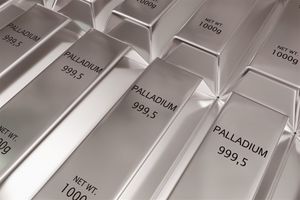
Diversified industrial manufacturing company Worthington (NYSE: WOR) announced better-than-expected revenue in Q2 CY2025, but sales were flat year on year at $317.9 million. Its non-GAAP profit of $1.06 per share was 25.6% above analysts’ consensus estimates.
Is now the time to buy Worthington? Find out by accessing our full research report, it’s free.
Worthington (WOR) Q2 CY2025 Highlights:
- Revenue: $317.9 million vs analyst estimates of $301.1 million (flat year on year, 5.6% beat)
- Adjusted EPS: $1.06 vs analyst estimates of $0.84 (25.6% beat)
- Adjusted EBITDA: $85.06 million vs analyst estimates of $69.77 million (26.8% margin, 21.9% beat)
- Operating Margin: -9.6%, up from -17.6% in the same quarter last year
- Free Cash Flow Margin: 15.5%, up from 10.6% in the same quarter last year
- Market Capitalization: $2.96 billion
“We closed fiscal 2025 with a strong fourth quarter, delivering year-over-year and sequential growth in adjusted EBITDA, adjusted EPS and free cash flow,” said Worthington Enterprises President and CEO Joe Hayek.
Company Overview
Founded by a steel salesman, Worthington (NYSE: WOR) specializes in steel processing, pressure cylinders, and engineered cabs for commercial markets.
Revenue Growth
A company’s long-term performance is an indicator of its overall quality. Any business can put up a good quarter or two, but the best consistently grow over the long haul. Worthington’s demand was weak over the last five years as its sales fell at a 17.7% annual rate. This was below our standards and suggests it’s a low quality business.
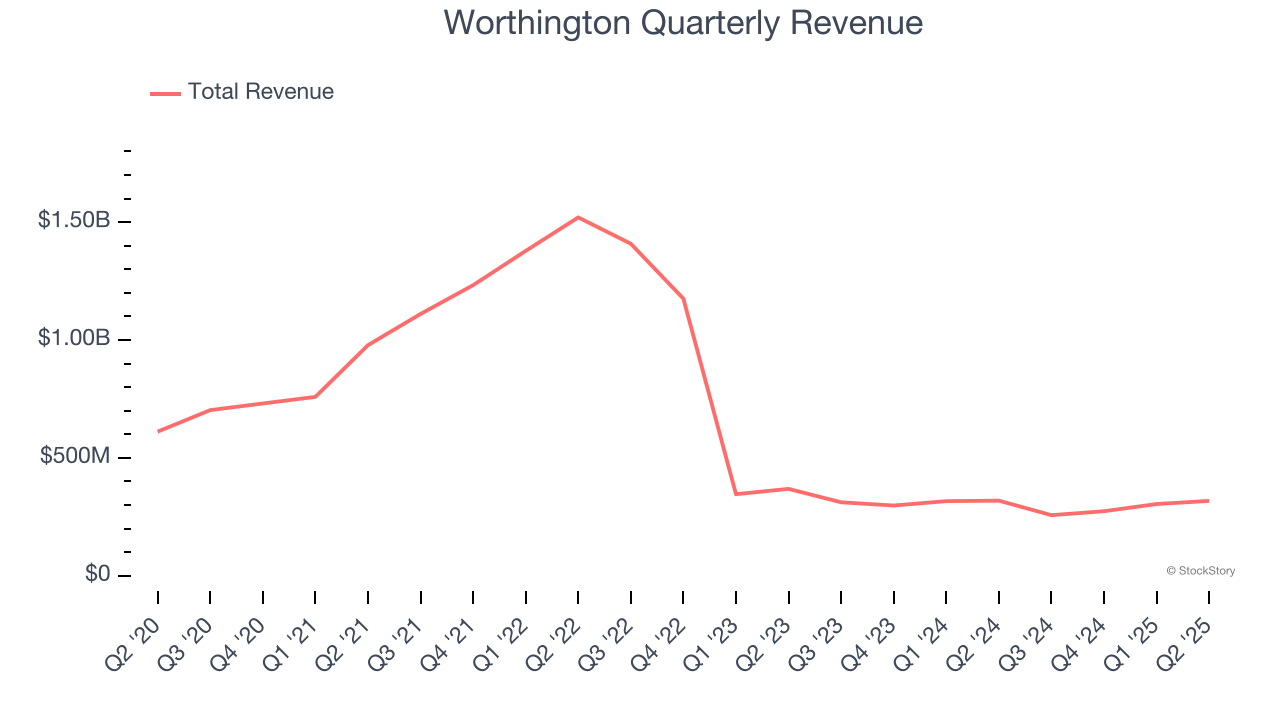
We at StockStory place the most emphasis on long-term growth, but within industrials, a half-decade historical view may miss cycles, industry trends, or a company capitalizing on catalysts such as a new contract win or a successful product line. Worthington’s recent performance shows its demand remained suppressed as its revenue has declined by 40.9% annually over the last two years. Worthington isn’t alone in its struggles as the Engineered Components and Systems industry experienced a cyclical downturn, with many similar businesses observing lower sales at this time. 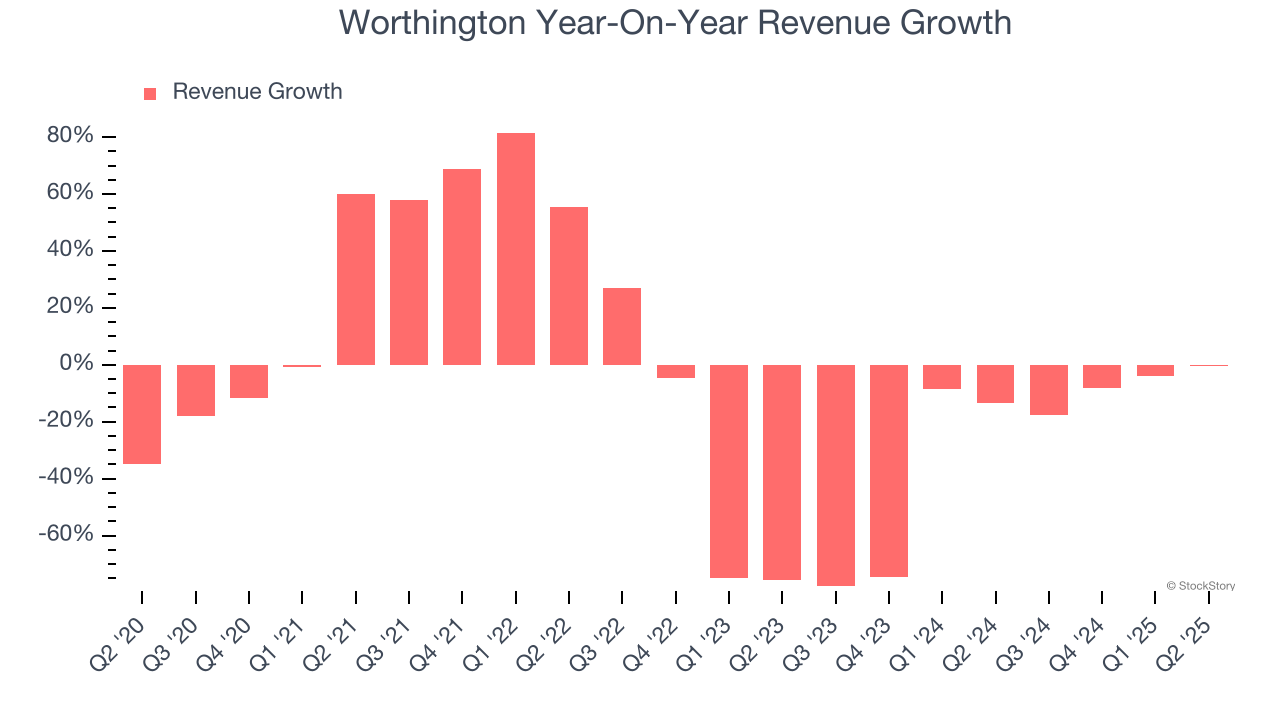
Worthington also breaks out the revenue for its most important segments, Consumer Products and Building Products, which are 39.5% and 60.5% of revenue. Over the last two years, Worthington’s Consumer Products revenue (cylinders, torches, balloon kits, tools) averaged 8.9% year-on-year declines. On the other hand, its Building Products revenue (refrigerant, cylinders, tanks) averaged 1.3% growth.
This quarter, Worthington’s $317.9 million of revenue was flat year on year but beat Wall Street’s estimates by 5.6%.
Looking ahead, sell-side analysts expect revenue to grow 2% over the next 12 months. While this projection indicates its newer products and services will fuel better top-line performance, it is still below average for the sector.
Here at StockStory, we certainly understand the potential of thematic investing. Diverse winners from Microsoft (MSFT) to Alphabet (GOOG), Coca-Cola (KO) to Monster Beverage (MNST) could all have been identified as promising growth stories with a megatrend driving the growth. So, in that spirit, we’ve identified a relatively under-the-radar profitable growth stock benefiting from the rise of AI, available to you FREE via this link.
Operating Margin
Operating margin is one of the best measures of profitability because it tells us how much money a company takes home after procuring and manufacturing its products, marketing and selling those products, and most importantly, keeping them relevant through research and development.
Worthington was profitable over the last five years but held back by its large cost base. Its average operating margin of 3.5% was weak for an industrials business. This result isn’t too surprising given its low gross margin as a starting point.
Analyzing the trend in its profitability, Worthington’s operating margin decreased by 6.2 percentage points over the last five years. Worthington’s performance was poor no matter how you look at it - it shows that costs were rising and it couldn’t pass them onto its customers.

This quarter, Worthington generated an operating margin profit margin of negative 9.6%, up 8 percentage points year on year. The increase was solid, and because its operating margin rose more than its gross margin, we can infer it was more efficient with expenses such as marketing, R&D, and administrative overhead.
Earnings Per Share
Revenue trends explain a company’s historical growth, but the long-term change in earnings per share (EPS) points to the profitability of that growth – for example, a company could inflate its sales through excessive spending on advertising and promotions.
Worthington’s EPS grew at an unimpressive 4.1% compounded annual growth rate over the last five years. This performance was better than its 17.7% annualized revenue declines but doesn’t tell us much about its business quality because its operating margin didn’t improve.
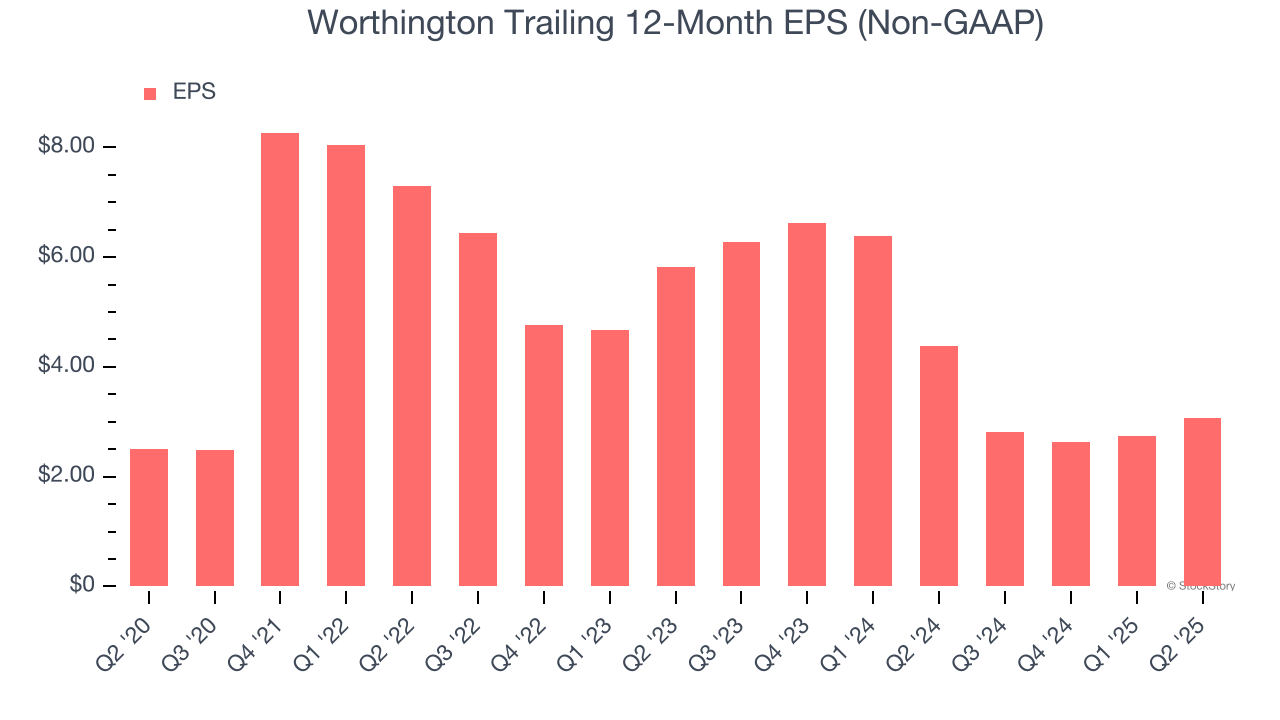
Diving into the nuances of Worthington’s earnings can give us a better understanding of its performance. A five-year view shows that Worthington has repurchased its stock, shrinking its share count by 9.4%. This tells us its EPS outperformed its revenue not because of increased operational efficiency but financial engineering, as buybacks boost per share earnings. 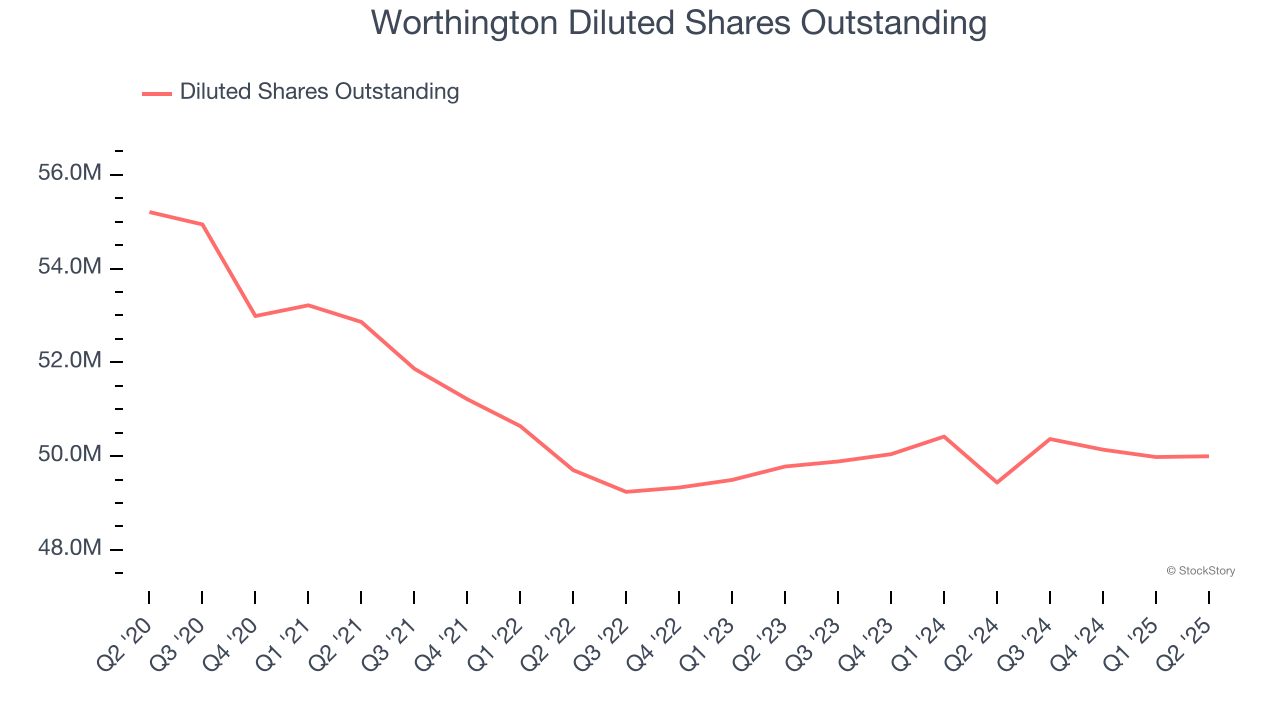
Like with revenue, we analyze EPS over a shorter period to see if we are missing a change in the business.
For Worthington, its two-year annual EPS declines of 27.4% show it’s continued to underperform. These results were bad no matter how you slice the data.
In Q2, Worthington reported EPS at $1.06, up from $0.74 in the same quarter last year. This print easily cleared analysts’ estimates, and shareholders should be content with the results. Over the next 12 months, Wall Street expects Worthington’s full-year EPS of $3.07 to grow 8.2%.
Key Takeaways from Worthington’s Q2 Results
We were impressed by how significantly Worthington blew past analysts’ EPS and EBITDA expectations this quarter. We were also excited its revenue outperformed Wall Street’s estimates. Zooming out, we think this was a solid print. The stock traded up 6.3% to $63.95 immediately after reporting.
Sure, Worthington had a solid quarter, but if we look at the bigger picture, is this stock a buy? What happened in the latest quarter matters, but not as much as longer-term business quality and valuation, when deciding whether to invest in this stock. We cover that in our actionable full research report which you can read here, it’s free.




